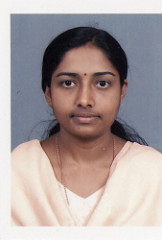Table of Contents
Epidemiology | Etiology | Radiology description | Gross description | Gross images | Additional referencesCite this page: Amita R. Chambers. PathologyOutlines.com website. https://www.pathologyoutlines.com/topic/heartchambers.html. Accessed April 18th, 2024.
Epidemiology
- About 1% of all children are born with congenital heart disease
Etiology
- Multifactorial inheritance involving both genetic and environmental causes
- Maternal factors:
- Antiseizure medications
- Lithium to treat depression
- Phenylketonuria
- Insulin dependent diabetes
- Rubella
- Genetic syndromes:
- Down syndrome (trisomy 21)
- Trisomy 18 and trisomy 13
- Turner syndrome
- Cri-du-chat syndrome
- Wolf-Hirshhorn syndrome
- DiGeorge syndrome (22q11)
- Single gene defects:
- Marfan syndrome
- Smith-Lemli-Opitz syndrome
- Ellis-van Creveld syndrome
- Holt-Oram syndrome
- Noonan syndrome
- Mucopolysaccharidoses
- Goldenhar syndrome (hemifacial microsomia)
- William syndrome
- VACTERL association (tracheal and esophageal malformations associated with vertebral, anorectal, cardiac, renal and limb abnormalities)
Radiology description
- Chest radiography is a useful adjunct in the evaluation of any congenital heart defect, including tricuspid atresia
- The radiographic features are also useful in evaluating the pulmonary blood flow and categorizing them into pulmonary oligemia and pulmonary plethora groups
- These echocardiographic features are best demonstrated in the apical and subcostal 4 chamber views
- The size of the left atrium and the size and function of the left ventricle can be assessed with M-mode echocardiography
- Repeated measurements during follow-up are useful in evaluating left ventricular function
Gross description
- Right atrium:
- The right auricle is separated from the right atrium by a shallow posterior vertical indentation on the right atrium (i.e. the sulcus terminalis) and internally, by a vertical crest, the crista terminalis
- The inner wall of the right atrium is composed of a smooth posterior portion (into which the vena cavae and coronary sinus drain) and a ridgelike muscular anterior portion separated by the crista terminalis
- The thebesian valve is located at the orifice of the coronary sinus
- The limbus of the fossa ovalis is located on the medial wall of the right atrium and circumscribes the septum primum of the fossa ovalis anteriorly, posteriorly and superiorly
- Congenital anomalies:
- Tricuspid atresia: the eustachian and thebesian valves may be so enlarged that they physically separate the right atrium into 2 distinct sections
- Juxtaposition of both atrial appendages
- Malpositioning of both appendages
- Left atrium:
- The 4 pulmonary veins drain into the left atrium
- The flap valve of the fossa ovalis is located on the septal surface of the left atrium
- The appendage of the left atrium is consistently narrow and long
- Recognition of this appendage is the most reliable way to differentiate the left atrium from the right atrium
- Right ventricle:
- The right ventricle receives blood across the tricuspid valve, which is located in the anterolateral (sinus) portion of the right ventricle and discharges blood into the pulmonary artery across the pulmonic (semilunar) valve located in the outflow tract (infundibulum)
- The inflow tract (sinus) and outflow tract (infundibulum) of the right ventricle are widely separated
- Internally, the sinus area and infundibulum contain coarse trabeculations
- The septal portion of the right ventricle has 3 components:
- The inflow tract, which supports the tricuspid valve
- The trabecular wall, which typifies the internal appearance of the right ventricle
- The outflow tract, which itself is subdivided into 3 components, namely the conal septum, septal band division and trabecular septum
- Lateral to the conal septum, the parietal extension of the infundibular septum and the infundibular fold comprise the crista supraventricularis
- The tricuspid valve is supported by a large anterior papillary muscle, which arises from the anterior free wall and the moderator band, and by several small posterior papillary muscles, which attach posteriorly to the septal band
- Congenital anomalies:
- Malposition of the conal septum can cause double outlet right ventricle
- Ventricular septal defects (VSDs) commonly occur in the area between the sinus and the outlet tract of the right ventricle
- Left ventricle:
- The left ventricle receives blood from the left atrium via the mitral (bicuspid) valve and ejects blood across the aortic valve into the aorta
- The left ventricle can be divided into 2 primary portions, namely, the large sinus portion containing the mitral valve and the small outflow tract that supports the aortic (semilunar) valve
- Inflow and outflow portions are closely juxtaposed, unlike in the right ventricle, in which the tricuspid and pulmonic valves are widely separated
- The free wall and apical half of the septum contain fine internal trabeculations
- The septal surface is divided into a trabeculated portion (sinus) and a smooth portion (outflow)
- The sinus area just beneath the mitral valve is the inlet septum; the remainder of the sinus area is termed the trabecular septum
- The outflow tract is located anterior to the anterior mitral leaflet and is part of the atrioventricular (AV) septum
- Both the right half of the anterior mitral valve leaflet and the right aortic cusp attach to the septum
- The left half of the anterior mitral leaflet is in direct fibrous contact with the aortic valve at the aortic-mitral annulus
- The conal septum of the right ventricle is positioned opposite the aortic valve
- The mitral valve is supported by 2 large papillary muscles (anterolateral, posteromedial) attached to the free wall
- The anterior papillary muscle is attached to the anterior portion of the left ventricular wall, and the posterior papillary muscle arises more posteriorly from the ventricle's inferior wall
Additional references





